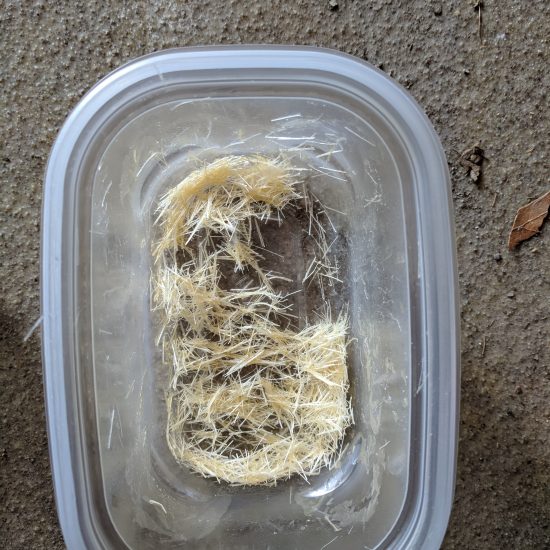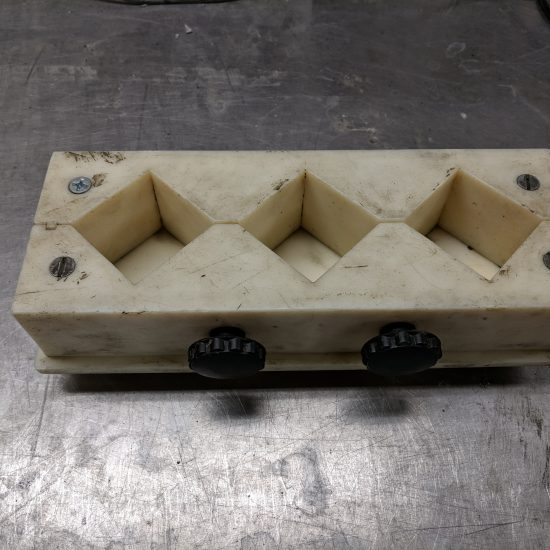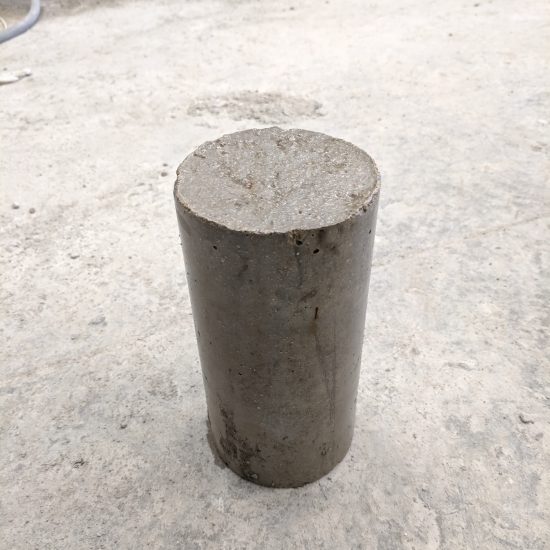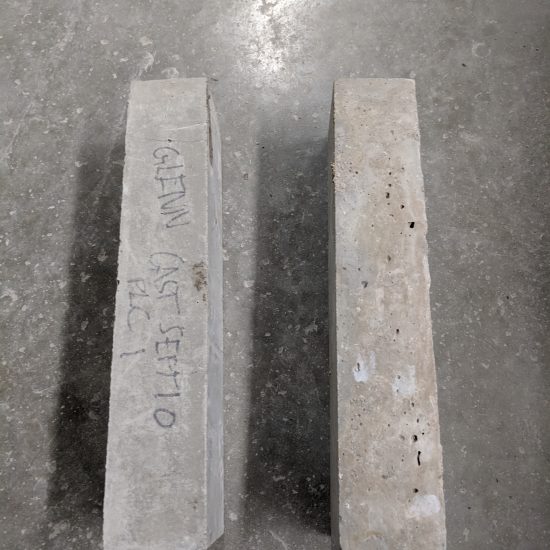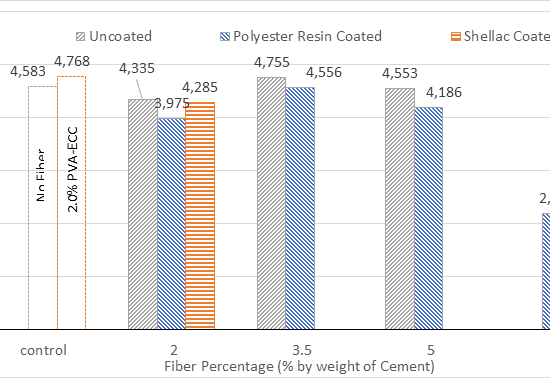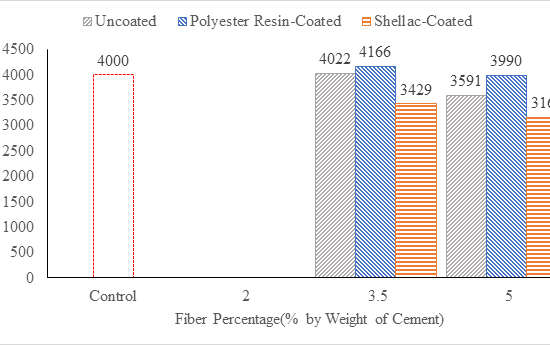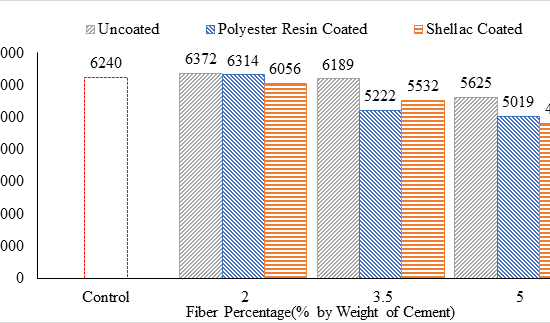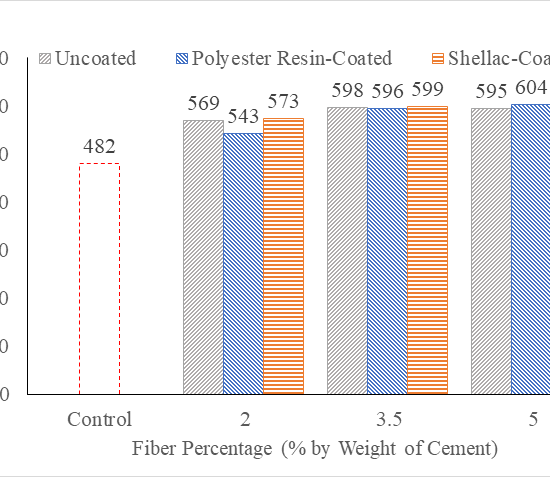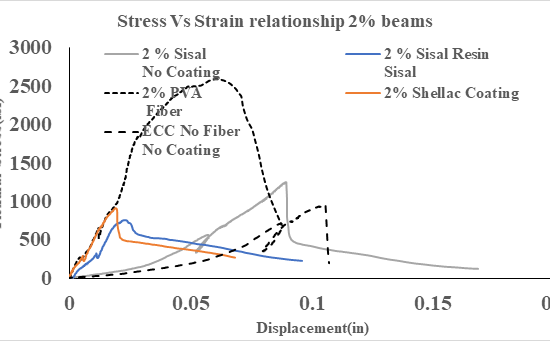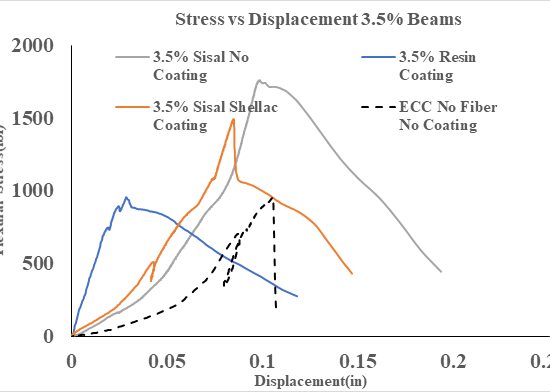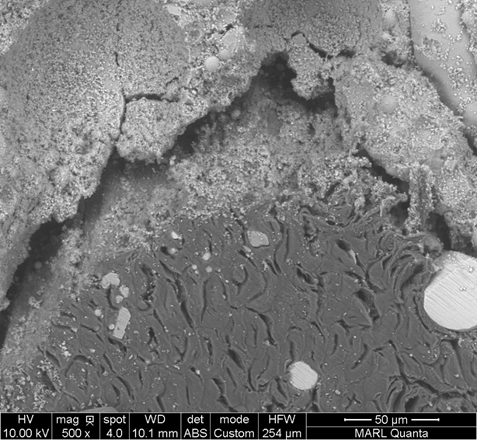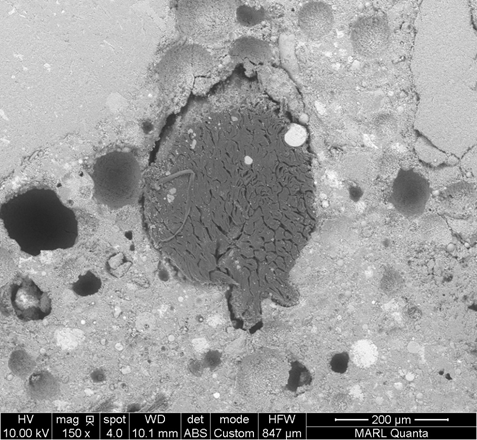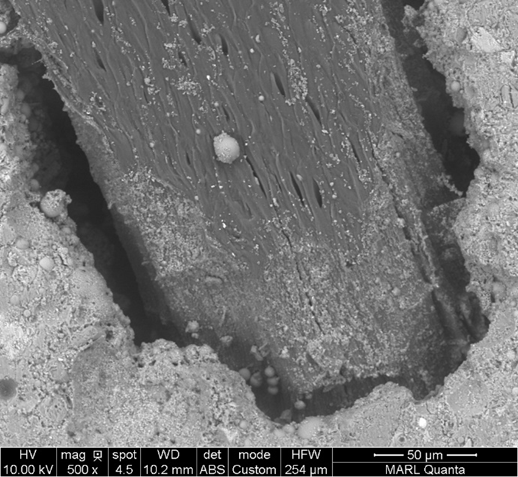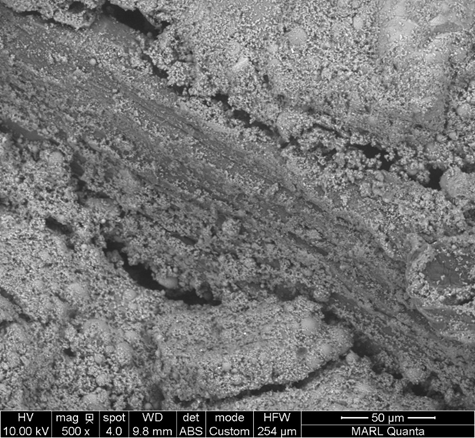Resin Coated Sisal Fiber Reinforced Composites, Iowa State University
In recent years engineered cement composite (ECC) has been introduced to the cement and concrete industry with a set of exceptional properties (Li 2003). ECC is a unique type of high performance fiber-reinforced cementitious composites designed with micro-mechanical principles to achieve high ductility under tensile and shear loading, high damage tolerance under service loading, and high durability under normal service conditions (Li 2003, 1998, (Li, Wang, and Wu 2001). ECC has a tensile strain capacity of 3 to 5% depending on the specific ECC mixture which is 300 to 500 times larger than that of normal concrete or fiber reinforced concrete (FRC) (Lin, Kanda, and Li 1999, Li 1998), and exhibits pseudo-strain hardening behaviors accompanied by well distributed micro-cracking. It also offers high ultimate tensile strength of 5-10 MPa (725-1450 psi), modulus of rapture of about 8-25 MPa (1160-3626 psi), fracture toughness of 35-30 KJ/m2 and compressive strength of up to 80 MPa (11603 psi). This ability of ECC reinforced with synthetic polyvinyl alcohol (PVA) fibers is due to multiple crack formation (many closely spaced micro-cracks) at increasing composite tensile stress (Li 1998, Li and Fischer 2002). This multiple crack formation is due the fiber bridging property of the PVA fibers at specific fiber proportion between 2-3% in achieving significant improvements in tension under uniaxial loading compared to unreinforced or fiber-reinforced composites (Li, Wang, and Wu 2001(Kamada and Li 2000, Lepech and Li 2010, Li and Wang 2006).
This material optimization is achieved with fiber volume fractions ranging between 2-3%. As a result, synthetic fibers can form a high proportion of material cost; this additional cost particularly makes ECC uneconomical for large volume applications (Wang and Li 2007, Li 2003, (Kong, Bike, and Li 2003, Lepech et al. 2008). Additionally, synthetic fibers utilized in ECC are derived from petroleum products resulting in carbon emissions(Yang, Yang, and Li 2007). Therefore, an opportunity exists for developing an ECC mix with cheaper class of fibers that are abundant and sustainable.
As an alternative to synthetic fibers, natural fibers are versatile, abundant, and can be sourced from a variety of bio-matter including plants, trees, crops, and waste fibers (Wambua, Ivens, and Verpoest 2003). Natural fibers exhibit low-density, have low-cost, are renewable, consume lesser energy, and are biodegradable (Ardanuy, Claramunt, and Toledo Filho 2015). These properties give it certain benefits over synthetic fibers with cost, abundance, and lower carbon dioxide emissions being significant features. Additionally, incorporating fibers into cementitious composites delay the decomposition of the carbon rich material to the atmosphere by sequestering its stored energy into a building material.
Natural fibers come in a variety of forms with varying diameter, aspect ratio, length, surface structure, and form (Ardanuy, Claramunt, and Toledo Filho 2015). Natural fiber embedded in cementitious composites exhibit improved toughness, ductility, flexural capacity and crack resistance (Ardanuy, Claramunt, and Toledo Filho 2015, Savastano, Warden, and Coutts 2003, Tolêdo Filho et al. 2003, Toledo Filho et al. 2005). Natural fibers promote fiber bridging mechanism in cementitious composites transferring the load post cracking.
Sisal fibers are a type of natural fiber which display physical properties such as low density, stiffness, and strength (Wambua, Ivens, and Verpoest 2003). One of the advantages of sisal reinforced cementitious composites is the fiber-bridging mechanism during and after cracking helping transfer the loads (Silva, Mobasher, and Filho 2009, Morton, Cooke, and Akers 2010). Additionally, the fibers enhance flexural strength, toughness, and impact resistance (Savastano, Warden, and Coutts 2003, Tolêdo Filho et al. 2003, Ardanuy, Claramunt, and Toledo Filho 2015).
This study aims to investigate utilizing sisal fiber as an alternative to the PVA fiber used in ECC composites. The bio-degradability of the sisal fiber creates challenges, as the sisal fiber is susceptible to alkaline attack in a cementitious matrix (Filho, Silva, and Filho 2013). Due to this vulnerability the tensile properties of the sisal fiber, which imparts composite concrete its ductility and flexural strength, is compromised. In this study, various resin-based coatings were provided for protection improving the longevity of the fiber in the cementitious composite.
The project expands on existing material studies carried out with ECC by utilizing abundant and cheap sisal fibers. The coated ¼’’ sisal fibers provide a cheaper partial reinforcement alternative to synthetic fibers that are embedded in ECC. The fibers improve ductility, flexural strength, peak flexural strength, and toughness.



